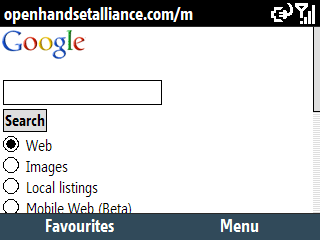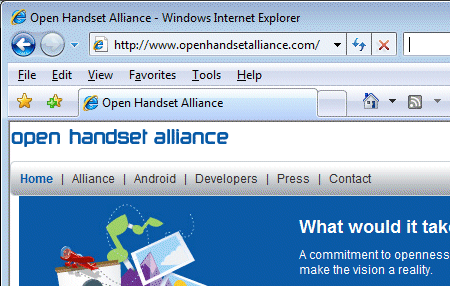I’ve read the blurb, downloaded and read the manual, and watched the video. Here’s my first reaction.
Let’s take it on trust that Kindle, Amazon’s new eBook reader, is light and compact, easy on the eye, simple to use, has long battery life, and is highly readable in low light or bright sunlight. That’s no small achievement, but even if that is the case I have reservations. Here goes.
1. Documents
Here is what Kindle can read:
- Kindle (.AZW)
- Text (.TXT)
- Unprotected Mobipocket (.MOBI, .PRC)
- Audible (.AA)
- MP3 (.MP3)
So what do you do if you have a Word document you want to transfer? Answer: you send it to Amazon, which converts it and emails the result. It’s a free service unless you want it emailed direct to your Kindle, when there is a small charge. What can Amazon convert:
- Microsoft Word (.DOC)
- Structured HTML (.HTML, .HTM)
- JPEG (.JPEG, .JPG), GIF (.GIF), PNG (.PNG), BMP (.BMP)
If you have a PDF you are out of luck. Not even RTF is supported, which is bizarre since it is a subset of .doc, which is supported. Don’t bet on your CSS-formatted HTML converting nicely.
Note: you can connect your Kindle to a computer and transfer documents. So there is a way to grab existing text documents such as those at the Gutenberg project and transfer them for free.
But it’s just plain text. Fine for novels, but not too good for other kinds of content. The .AZW document type on the other hand supports formatting. What is .AZW? I am guessing, but let’s consider three things:
- Kindle supports the Mobipocket formats
- I downloaded an .AZW document and opened it in an editor. It contains the word BOOKMOBI in the header.
- I downloaded a .MOBI document and opened it in an editor. It contains the word BOOKMOBI in the header, in the same position.
Looks like Amazon did a deal with Mobipocket.* That’s good, in that you can download a free document creator from there. You can also convert documents (including PDF) to .MOBI using the free Mobipocket reader. Maybe if you change the extension to .AZW it might still work? Perhaps I’m too optimistic, but you never know; it’s not a big issue since the Kindle reads .MOBI anyway.
How about books you purchase from the Kindle store, are they DRM-protected? My guess is yes, but I’ve yet to confirm. I don’t see anything in the manual about reading your .AZW documents on your PC. (Update: Yes they are DRM-protected).
Personally I will not consider purchasing a book from the Kindle store if I cannot read it on other devices as well. No matter how great the Kindle is, I may be out and about with just my laptop, or just my Smartphone. I may be at my desk and want to read my Kindle content from a desktop computer. If it is similar to Mobipocket, that may be possible to some extent, but there is all that activation/DRM stuff to deal with.
*Update – Amazon actually owns Mobipocket. So why is it not using a single format with compatible DRM (or better still, no DRM) throughout? Curious.
2. Design
Even if Kindle fixes things like daylight reading (which I believe Sony has also fixed), there is still an issue with design. I was convinced by a session at Mix07 that design is a huge issue for bringing print content to the web or other electronic formats. Kindle is at a disadvantage because it is currently monochrome. Further, I’d encourage anyone to have a play with the Times Reader to see how this WPF-based application makes for a better reading experience than PDF, which is essentially an on-screen rendering of print design and combines the disadvantages of both, or even HTML.
3. Value for money
Is an .AZW book good value at $9.99? That’s not a bad price, but when I picked one at random (Musicophilia) I found that I could buy the real book for $15.60 (free shipping) or second-hand for $11.60; a lot less than the $26.00 the Kindle store claims. If I buy the physical book, I can sell it or give it away when I’m done. The deal is more marginal than it first appears. If the content is locked to the Kindle device, that’s a deal-breaker.
What if Kindle goes colour in future, as is hinted, and better Kindle editions appear as a result? Will I be expected to buy the same content again?
4. Reading blogs and browsing the Web
Using Kindle you can subscribe to a blog for $.99 per month at the Kindle store. As a professional writer and blogger, I must say I like the idea of folk paying a subscription to read my stuff. As a user, I hate it. Why should I pay for what I can get for free on any other web-connected device? Further, my blog isn’t a “Kindle blog”, and I’m not sure how I can get it on the list.
Never mind, Kindle also has a web browser:
Your Kindle comes with an Experimental application called Basic Web which is a Web browser that is optimized to read text-centric Web sites. It supports JavaScript, SSL and cookies but does not support media plug-ins (Flash, Shockwave, etc.) or Java applets.
So you can browse to http://www.itwriting.com/blog and read it anyway. Hmmm, why would I pay for a subscription if I can browse to the blog for free? Just for offline?
Especially as the blurb says:
No monthly wireless bills, service plans, or commitments—we take care of the wireless delivery so you can simply click, buy, and read.
So Kindle has free mobile data access? Now that really gets my interest, especially if it goes global. Just wait for some hacker to convert Kindle into a free wireless modem for your laptop.
5. Device convergence
I’m longing for convergence. I’m fed up with carrying a phone, a laptop, a camera, an MP3 player. We are seeing some convergence – better cameras built into phones, Apple’s iPhone which is also an iPod – but it is early days. Unfortunately Kindle is the opposite: yet another gadget to carry. I don’t mind the existence of the reader, but Amazon needs to support other devices too (as Mobipocket does) so that the convergence dream is not lost.
Amazon’s play for downloadable content
Now we see another facet to Amazon’s music download store. The company wants to be your one-stop online shop for downloadable content: music, periodicals, books, the lot. Note that Kindle plays music too.
Will it work? I have huge respect for Amazon; it has the infrastructure, the customers and the vision to make something like this work. At the same time there seem to be some awkward gaps in this initial release, and to date the public’s enthusiasm for electronic books has been limited. I doubt that Kindle 1.0 will change that. Kindle 3.0 maybe. Even so, I can’t wait to try one.


